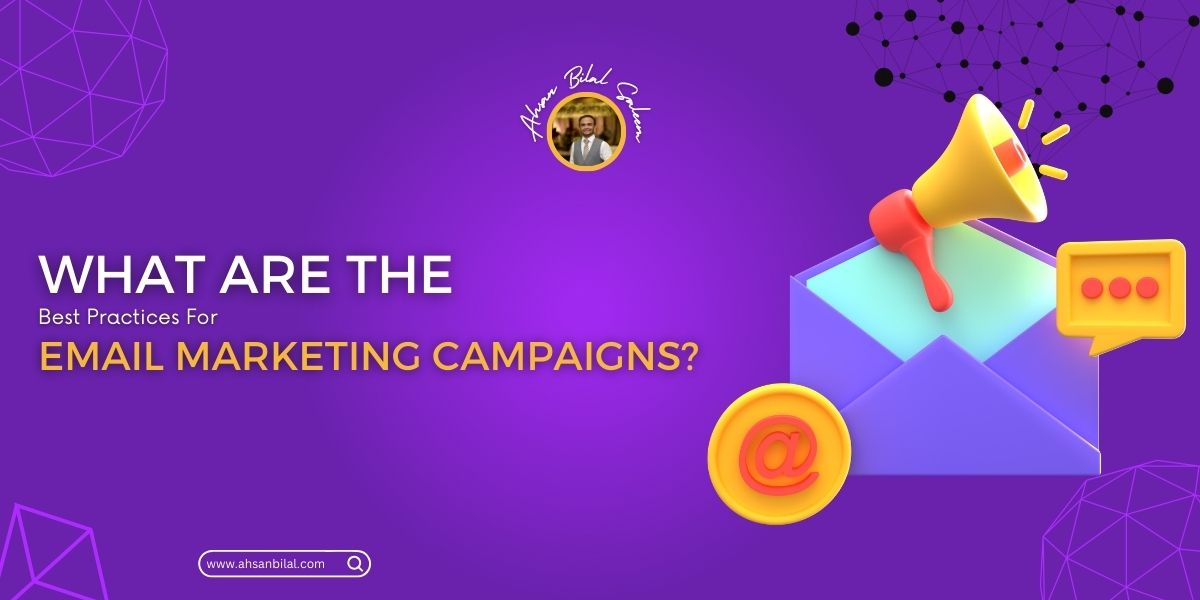What Are The Best Practices For Email Marketing Campaigns?
Email marketing remains one of the most effective tools for businesses to engage with their audience, nurture leads, and drive conversions. However, with the increasing volume of emails flooding inboxes daily, standing out and making a meaningful impact requires strategic planning and execution. Here are the best practices for crafting successful email marketing campaigns:
1. Build A Quality Email List
A successful email marketing campaign starts with a quality email list. Focus on growing your list organically by offering valuable content, incentives, and clear opt-in forms on your website and social media channels. Avoid purchasing email lists, as these often result in high bounce rates and low engagement.
2. Segment Your Audience
Segmentation is crucial for delivering relevant content to your subscribers. Divide your email list into segments based on factors such as demographics, purchase history, engagement levels, and past interactions. This allows you to tailor your messages to meet the specific needs and interests of each group, increasing the chances of engagement and conversion.
3. Craft Compelling Subject Lines
The subject line is the first thing recipients see, and it significantly impacts open rates. Make your subject lines clear, concise, and compelling. Use action-oriented language, personalize when possible, and avoid spammy words. A/B testing different subject lines can help identify what resonates best with your audience.
4. Personalize Your Emails
Personalization goes beyond addressing the recipient by name. Use the data you have to customize the content based on the recipient’s preferences, past behavior, and interactions with your brand. Personalized emails can significantly improve engagement and conversion rates.
5. Create Valuable Content
The content of your emails should provide value to the recipient. Whether it’s educational information, exclusive offers, product updates, or industry news, make sure your emails are worth the time of your subscribers. High-quality content fosters trust and loyalty, encouraging recipients to look forward to your emails.
6. Optimize For Mobile Devices
With a significant portion of emails being opened on mobile devices, it’s essential to ensure your emails are mobile-friendly. Use a responsive design, keep the layout simple, and make sure that text, images, and call-to-action buttons are easily readable and clickable on smaller screens.
7. Include Clear Calls To Action (Ctas)
Every email should have a clear and compelling call to action. Whether it’s encouraging recipients to read a blog post, download a resource, make a purchase, or sign up for an event, the CTA should stand out and be easy to follow. Use action-oriented language and make sure the CTA button or link is prominent.
8. Test And Analyze Your Campaigns
Continuous testing and analysis are key to improving your email marketing efforts. Conduct A/B tests on different elements of your emails, such as subject lines, content, images, and CTAs. Use analytics to track open rates, click-through rates, conversion rates, and other relevant metrics. Analyzing this data helps you understand what works and what doesn’t, allowing you to refine your strategy accordingly.
9. Maintain Consistency
Consistency in your email marketing campaigns helps in building brand recognition and trust. Stick to a regular sending schedule, whether it’s weekly, bi-weekly, or monthly. Ensure that the tone, style, and design of your emails align with your brand identity.
10. Comply With Legal Requirements
Ensure your email marketing practices comply with relevant laws and regulations, such as the CAN-SPAM Act in the United States or the General Data Protection Regulation (GDPR) in the European Union. Provide clear opt-out options, include your business address, and respect privacy preferences.
Conclusion
Email marketing, when done right, can be a powerful tool for building relationships, driving sales, and growing your business. By following these best practices—building a quality list, segmenting your audience, crafting compelling subject lines, personalizing content, creating valuable emails, optimizing for mobile, including clear CTAs, testing and analyzing, maintaining consistency, and complying with legal requirements—you can maximize the effectiveness of your email marketing campaigns and achieve your business goals.










